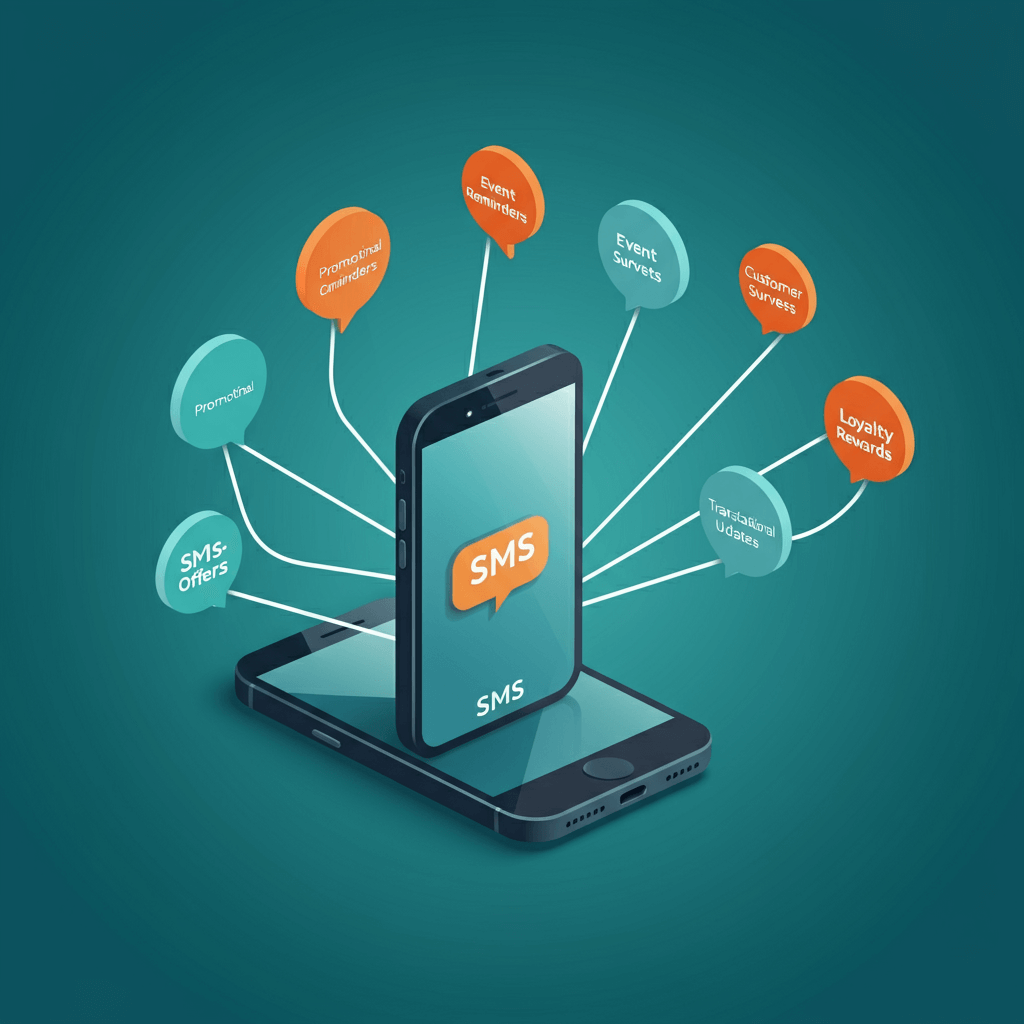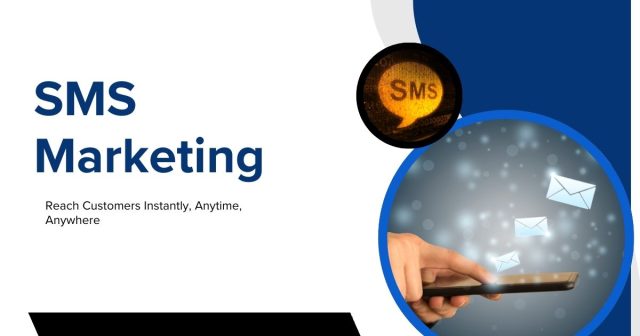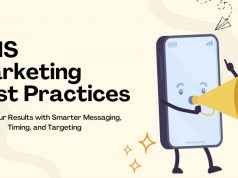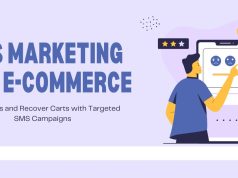Text messages have a 98% open rate compared to email’s 20%. That single statistic reveals why businesses across industries are turning to SMS marketing as their secret weapon for customer engagement.
Unlike social media posts that get lost in feeds or emails that land in spam folders, text messages arrive directly in your customers’ pockets. They’re read within minutes, not hours or days. This immediacy creates opportunities that other marketing channels simply can’t match.
But SMS marketing isn’t just about speed—it’s about building genuine connections with your audience through personalized, timely communication. When done right, it transforms how you interact with customers, driving higher engagement rates, increased sales, and stronger brand loyalty.
This guide will walk you through everything you need to know about SMS marketing, from understanding the basics to implementing campaigns that deliver real results.
What Is SMS Marketing?
SMS marketing involves sending promotional messages, updates, and notifications directly to customers’ mobile phones via text message. These campaigns can include everything from flash sale announcements and appointment reminders to exclusive offers and order confirmations.
The beauty of SMS marketing lies in its simplicity. There are no complex algorithms to navigate, no design elements to perfect, and no lengthy content to craft. Your message arrives as plain text, making it accessible to anyone with a mobile phone—which is virtually everyone.
Modern SMS marketing platforms allow businesses to automate campaigns, segment audiences, and track performance metrics. This means you can send targeted messages to specific customer groups at optimal times, all while measuring the impact of your efforts.
Why SMS Marketing Works So Well
Immediate Delivery and Response
Text messages are delivered instantly and read within three minutes on average. This speed makes SMS perfect for time-sensitive offers, breaking news, or urgent updates that require immediate attention.
Universal Accessibility
Unlike smartphone apps or social media platforms, SMS works on every mobile device. Your customers don’t need internet access, specific apps, or technical knowledge to receive and respond to your messages.
Personal and Direct Communication
Text messages feel personal and intimate. They bypass crowded email inboxes and noisy social media feeds to reach customers directly. This personal touch helps build stronger relationships between brands and consumers.
High Engagement Rates
Beyond the impressive open rates, SMS messages also generate click-through rates of around 36%—significantly higher than email marketing. Customers are more likely to act on text message offers than other forms of digital communication.
Cost-Effective Marketing
SMS campaigns cost significantly less than traditional advertising methods. You can reach thousands of customers for a fraction of what you’d spend on print, radio, or television advertising.

Essential SMS Marketing Strategies
Build Your Subscriber List the Right Way
Growing your SMS subscriber list requires a strategic approach that prioritizes quality over quantity. Start by offering genuine value in exchange for phone numbers. This could be exclusive discounts, early access to sales, or useful content that your audience actually wants.
Make your opt-in process simple and transparent. Clearly explain what types of messages subscribers will receive and how frequently you’ll contact them. Use multiple touchpoints to collect numbers, including your website, social media profiles, in-store signage, and email campaigns.
Consider implementing a double opt-in process where customers confirm their subscription via text. This extra step ensures you’re building a list of genuinely interested subscribers while maintaining compliance with regulations.

Craft Messages That Convert
Effective SMS messages are concise, clear, and action-oriented. You have limited space—160 characters for standard messages—so every word counts. Start with a compelling hook that grabs attention immediately.
Include a clear call-to-action that tells recipients exactly what you want them to do. Whether it’s “Shop now,” “Book today,” or “Claim your discount,” make your desired action obvious and easy to follow.
Personalization significantly improves SMS performance. Use your subscribers’ names and reference their purchase history or preferences when possible. Messages that feel tailored to individual recipients generate much higher response rates.
Time Your Messages Perfectly
Timing can make or break your SMS campaigns. Generally, the best times to send marketing messages are between 10 AM and 8 PM on weekdays. Avoid early morning hours before 8 AM and late evening hours after 9 PM to respect your customers’ personal time.
Consider your audience’s lifestyle and behavior patterns. Restaurant promotions work well around lunch and dinner times, while retail offers might perform better on weekends when people have more time to shop.
Test different sending times to discover what works best for your specific audience. Track open rates and response rates across different time slots to identify optimal sending windows.
Segment Your Audience for Better Results
Not all customers are the same, so your SMS messages shouldn’t be either. Segment your subscriber list based on factors like purchase history, location, demographics, and engagement levels.
Create targeted campaigns for different segments. New customers might receive welcome messages and introductory offers, while loyal customers could get exclusive previews and VIP promotions. Location-based segments allow for hyper-local offers and event invitations.
Behavioral segmentation proves particularly powerful for SMS marketing. Customers who haven’t made recent purchases might receive win-back campaigns, while frequent buyers could get loyalty rewards and referral incentives.
Types of SMS Campaigns That Drive Results

Promotional Campaigns
Flash sales, limited-time offers, and exclusive discounts form the backbone of many SMS marketing strategies. These campaigns create urgency and encourage immediate action from subscribers.
Structure promotional messages with clear value propositions and specific deadlines. Instead of generic offers, create campaigns that feel exclusive to SMS subscribers. This exclusivity reinforces the value of staying subscribed to your text updates.
Transactional Messages
Order confirmations, shipping notifications, and delivery updates provide immediate value to customers while keeping your brand top-of-mind. These messages typically have even higher open rates than promotional content because customers expect and want this information.
Transactional messages offer opportunities for additional engagement. Include related product recommendations, customer service contact information, or links to leave reviews alongside the primary transaction details.
Appointment and Event Reminders
Service-based businesses benefit tremendously from SMS appointment reminders. These messages reduce no-shows, improve scheduling efficiency, and enhance customer satisfaction.
Send reminders at strategic intervals—typically 24-48 hours before appointments, with optional follow-up reminders on the day of service. Include relevant details like location, what to bring, and contact information for rescheduling.
Customer Support and Updates
Use SMS to provide customer support updates, service alerts, and important company news. These messages help maintain communication during service disruptions or significant changes that affect your customers.
Support-related SMS messages should be informative and solution-focused. If there’s a problem, explain what happened, how it affects customers, and what steps you’re taking to resolve it.
SMS Marketing Best Practices and Compliance
Legal Requirements and Compliance
SMS marketing is heavily regulated to protect consumers from spam and unwanted messages. In the United States, businesses must comply with the Telephone Consumer Protection Act (TCPA) and obtain explicit consent before sending marketing messages.
Always include clear opt-out instructions in your messages. Phrases like “Reply STOP to opt out” should appear in your initial messages and be honored immediately when customers use them. Maintain detailed records of opt-ins and opt-outs to demonstrate compliance.
Different countries have varying regulations regarding SMS marketing. If you’re targeting international audiences, research and comply with local laws in each target market.
Frequency and Message Volume
Finding the right message frequency requires balance. Send too few messages and subscribers might forget about your brand. Send too many and you risk annoying customers and increasing opt-out rates.
Start conservatively with one to two messages per week and adjust based on subscriber feedback and engagement metrics. Monitor unsubscribe rates closely—sudden spikes often indicate you’re messaging too frequently.
Different campaign types warrant different frequencies. Transactional messages can be sent as needed, while promotional campaigns should be spaced out to maintain impact and avoid message fatigue.
Quality Over Quantity
Focus on sending valuable, relevant messages rather than maximizing message volume. Each text should provide clear value to recipients, whether through exclusive offers, useful information, or timely updates.
Regularly clean your subscriber list by removing inactive numbers and respecting opt-out requests promptly. A smaller list of engaged subscribers performs better than a large list of disinterested recipients.
Measuring SMS Marketing Success
Key Performance Indicators
Track delivery rates to ensure your messages reach intended recipients. High-quality subscriber lists typically achieve delivery rates above 95%. Low delivery rates might indicate outdated contact information or technical issues.
Monitor click-through rates for messages containing links. Strong SMS campaigns typically achieve click-through rates between 15-35%, significantly higher than email marketing averages.
Conversion rates measure how many recipients complete desired actions after receiving your messages. This metric directly ties SMS efforts to business outcomes like sales, appointments, or sign-ups.
A/B Testing Your Campaigns
Test different message elements to optimize performance. Compare various call-to-action phrases, sending times, message lengths, and personalization approaches to identify what resonates best with your audience.
Run tests with statistically significant sample sizes and clear success metrics. Test one element at a time to isolate what’s driving performance changes.
Use testing insights to inform future campaigns. Document what works well for different audience segments and campaign types to build a library of proven approaches.
Getting Started with SMS Marketing
Choose the Right SMS Platform
Select an SMS marketing platform that matches your business needs and budget. Look for features like automation capabilities, audience segmentation tools, analytics dashboards, and compliance management features.
Popular platforms include Twilio, SimpleTexting, EZ Texting, and Klaviyo. Many offer free trials that let you test functionality before committing to paid plans.
Ensure your chosen platform integrates with your existing customer relationship management (CRM) system and e-commerce platform. Seamless data flow between systems improves campaign effectiveness and reduces manual work.
Create Your First Campaign
Start with a simple welcome campaign for new subscribers. Thank them for joining your list, set expectations for future messages, and provide immediate value through a welcome offer or useful resource.
Plan your first promotional campaign around an existing sale or event. This approach lets you test your SMS system with time-bounded campaigns that create natural urgency.
Monitor your initial campaigns closely and gather subscriber feedback. Use these early insights to refine your messaging approach and identify what resonates with your specific audience.
Take Your Customer Communication to the Next Level
SMS marketing offers businesses an incredibly powerful way to connect with customers instantly and personally. The combination of high open rates, immediate delivery, and universal accessibility makes it an essential component of modern marketing strategies.
Success with SMS marketing comes from respecting your subscribers, providing genuine value, and maintaining consistent, relevant communication. Start small, test different approaches, and gradually expand your efforts based on what works best for your audience.
Ready to implement SMS marketing for your business? Begin by choosing a reliable platform and developing your subscriber acquisition strategy. Focus on building a quality list of engaged subscribers who genuinely want to hear from you. With the right approach, SMS marketing can become one of your most effective customer engagement tools.









